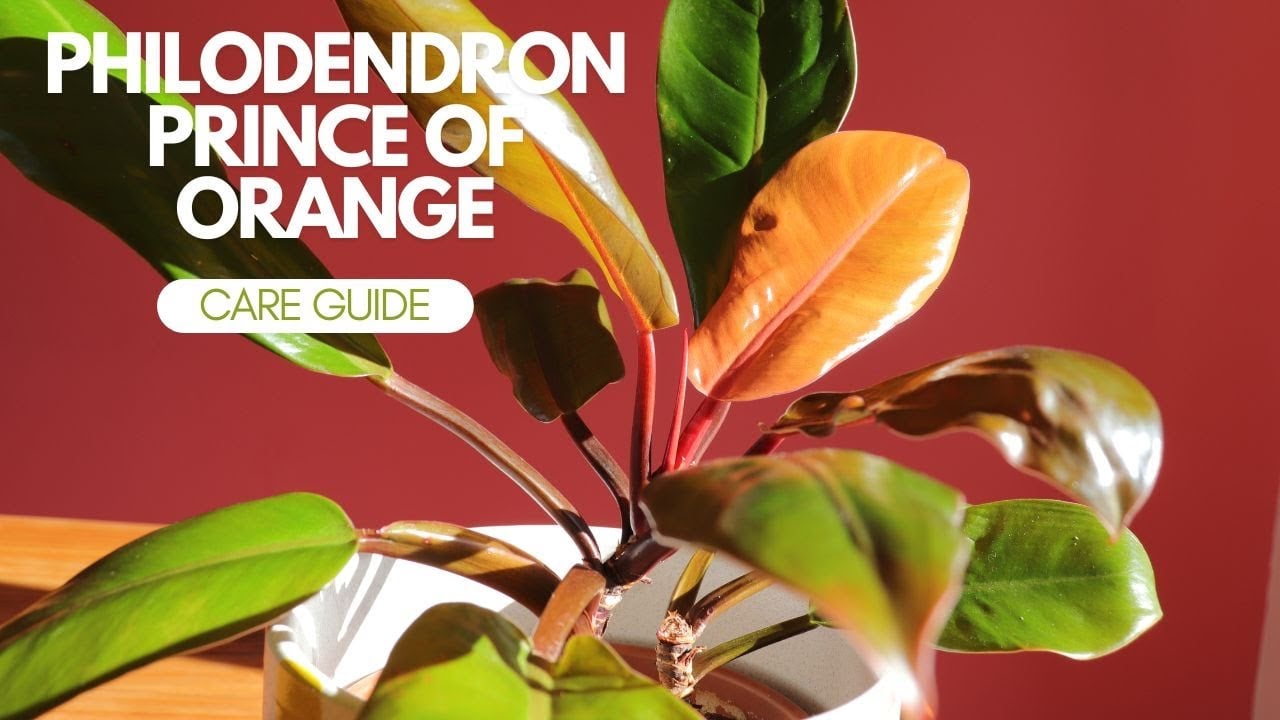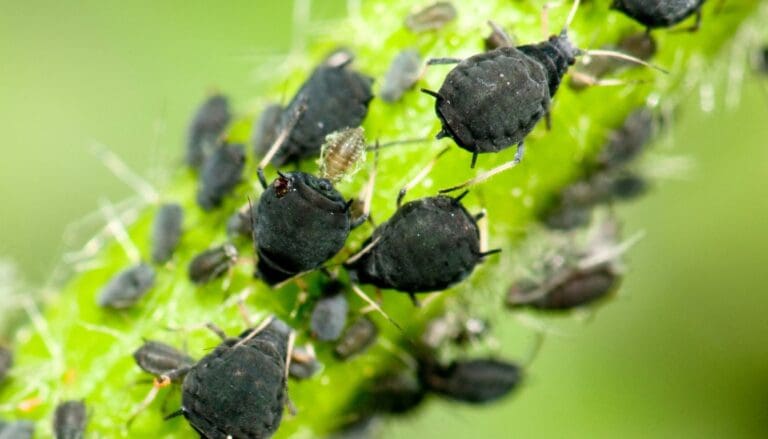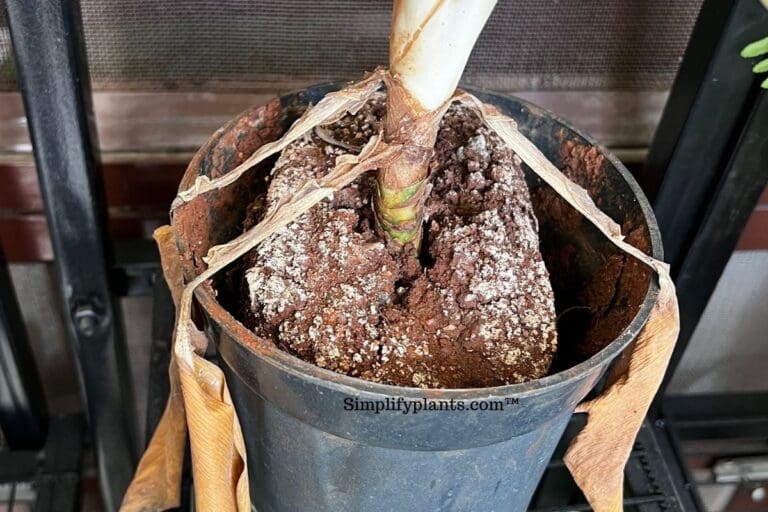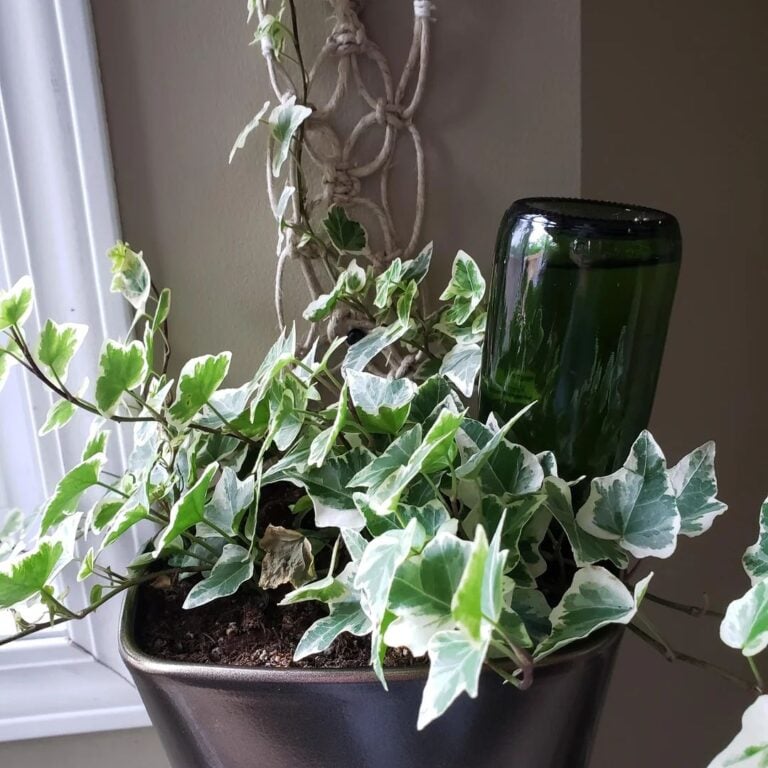Philodendron Prince of Orange Care Guide: Tips for a Thriving, Lush Plant!
If you’re looking to add a pop of color to your indoor jungle, the Philodendron ‘Prince of Orange’ might just be your next green best friend.
This vibrant plant is known for its unique leaves that change color over time, showing off a palette of greens, oranges, and yellows.
As a tropical plant lover, I must say, the Philodendron ‘Prince of Orange’ offers that splash of perpetual autumn, no matter the season! 🍂🌿
Caring for this colorful character isn’t as tricky as you might think.
In my experience, keep it in a spot with bright, indirect sunlight and you’ll see it flourish.
I’ve found that it prefers to stay warm, cozying up in temperatures between 65 – 80°F.
If the air around gets too dry, don’t hesitate to bring out your trusty spray bottle and give it a gentle mist for that coveted humidity. 💦
Have you invited a ‘Prince of Orange’ into your home yet? How’s it adding cheer to your space? Don’t be shy; drop a comment and let’s chat about our leafy friends. Share your best tips and maybe a pic or two. I’m always looking for new plant pals and advice! 🌱🏡
Please note: Simplify Plants is reader-supported. As an Amazon Associate, I earn from qualifying purchases made by our readers with no extra cost added to you all! Some links in the post are affiliate links and I get a commission from purchases made through links in the post.
Overview of Philodendron Prince of Orange
When you bring a Philodendron Prince of Orange into your home, you’re adding a splash of tropical flair that’s both elegant and vibrant. Let me guide you through its world.
Origin and Characteristics
My experience with the Philodendron Prince of Orange starts with its origins in the tropical rainforests.
This radiant plant is known for its color-changing leaves that evolve from a stunning orange to deep green as they mature. Each leaf is like a live show of Mother Nature’s palette! 🌿✨
Growth Habit
Talking about its growth, expect a compact and bushy companion that doesn’t plan on taking over your space. It’s the perfect size for that cozy corner by your reading nook.
Have you ever seen one of these beauties bask in the soft morning light? It’s a sight to behold!
Popular Varieties
While the classic Prince of Orange steals the show, there are other varieties out there. You might find some with different leaf shapes or growth patterns, but that signature color transformation? It’s unique to our orange-hued buddy here.
I’m always thrilled to see how these plants brighten up a room; they just have a way of making everything look a bit more cheerful, don’t you think? If you’re as fond of these plants as I am, let me know what makes your Philodendron Prince of Orange special in your home! 🏡🧡
Ideal Growing Conditions

If you’re like me and love adding a pop of color to your indoor jungle, then knowing the ideal growing conditions for the vibrant Philodendron ‘Prince of Orange’ is crucial. Let’s set our leafy friend up for success, shall we?
Light Requirements
I can’t stress enough how much our ‘Prince of Orange’ adores bright, indirect light. Too much direct sunlight can be a bit harsh, causing the leaves to fade or even burn. That’d be a sad day, right? 😢
Aim for a spot where the rays are gently filtered; perhaps near a sheer-curtained window. Trust me, it’ll thank you for it!
Temperature and Humidity
Creating that perfect, balmy vibe is key for our tropical companion. You’ll want to keep the room between 65 – 80°F (18 – 27°C).
Remember, no chilly drafts or sudden changes, okay?
Now let’s talk humidity – think rainforest air.
I like keeping the moisture levels around 50% or higher, so maybe add a humidifier or a tray of water with pebbles near your plant to keep it extra happy. A little mist here and there doesn’t hurt either! 💦
Soil Preferences
The ‘Prince’ can be picky about its throne, and by that, I mean soil.
It prefers a well-draining, airy mix – think peat, perlite, and a bit of vermiculite.
Your plant’s roots should never sit in waterlogged soil; soggy is definitely not in its vocabulary. Keep it light and fluffy, almost like you’re making the perfect bed for your plant to snuggle into. 🛏️
Alright, plant pals, with these tips in your gardening toolkit, your Philodendron ‘Prince of Orange’ should be thriving in no time!
And hey, why not show off your own ‘Prince’ in the comments? I’d love to see how regal it looks in your home! 🏡👑 Share your pictures or any questions you might have; let’s get growing together!
Planting and Repotting
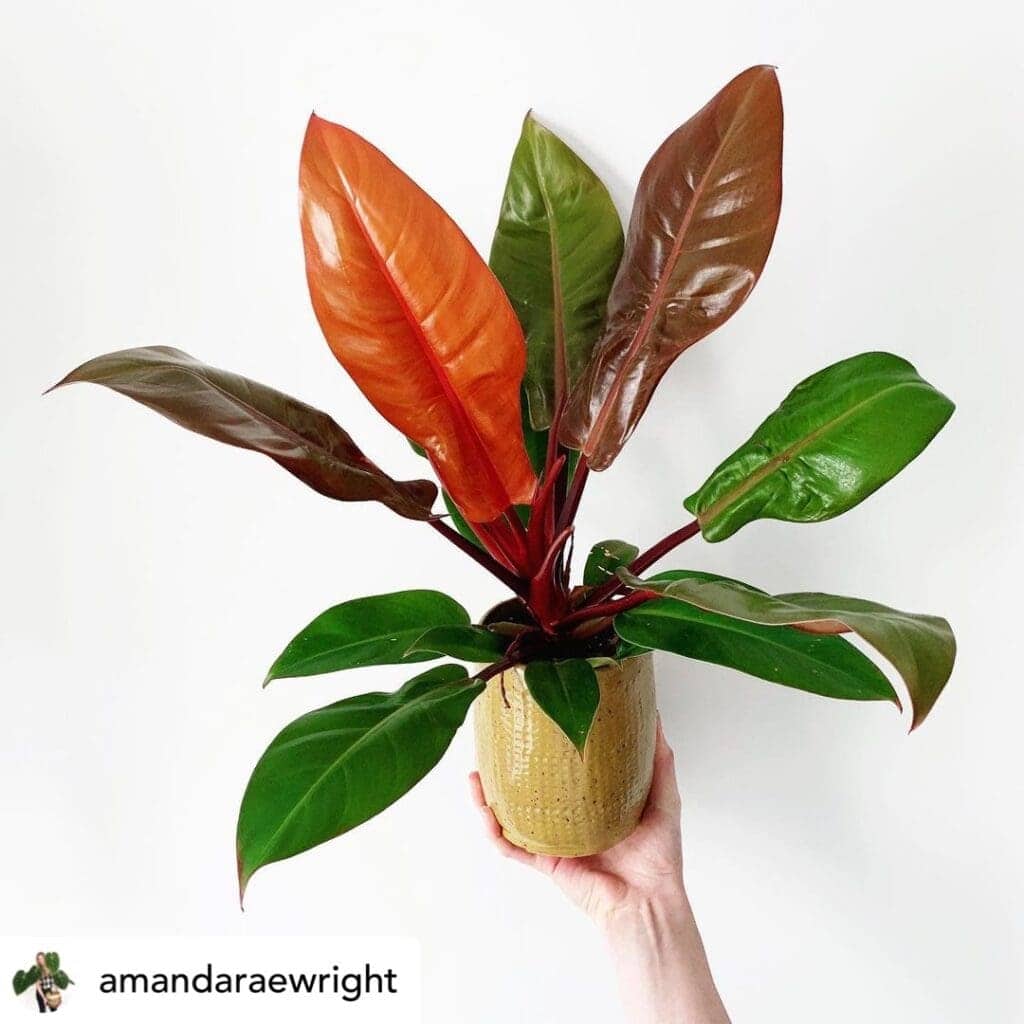
I’m about to spill the beans on how to give your Philodendron ‘Prince of Orange’ the royal treatment when it comes to planting and repotting. Trust me, getting this right means your leafy friend will thank you with vibrant growth!
Choosing the Right Container
Picking the perfect palace for your plant is a big deal! The container size should be just right—not too big or too small. Think of Goldilocks, but for plants! 😉
A pot that’s a size bigger than the root ball is ideal. Make sure it has adequate drainage holes; soggy soil is a no-no for these tropical treasures. 👑🌿
Consider a pot with a saucer to catch excess water, this way, you prevent any mess and keep your plant’s “feet” dry.
Potting Mix and Planting Technique
The potting mix is like a gourmet meal for your Philodendron. A well-draining mix is key, and you can easily whip up a perfect blend with equal parts peat, pine bark, and perlite. This combo keeps the roots happy and healthy.
When it’s time to plant, be gentle with the roots like you’re handling a precious gem.
Place the plant in the center of the pot, fill it with soil, and tap it down to eliminate any unwanted air pockets. Water it well and whisper some sweet nothings (or just talk about your day) to your newly potted prince. 🌱
Remember to water the soil evenly, ensuring it’s like a moist sponge, not a drenched washcloth.
So, how’s your Philodendron ‘Prince of Orange’ living? Luxurious and comfy in its pot, I hope! Hit me up in the comments with your planting triumphs and challenges—I’d love to hear all about it! And if you found this guide helpful, don’t be shy; share the love! 📢💕
Watering and Feeding

Are you ready to turn your Philodendron ‘Prince of Orange’ into the royalty it deserves to be? I’ve got the scoop on the perfect watering and feeding regimen that’ll make your green buddy thrive! 🌱
Watering Schedule
Watering this tropical charmer isn’t a by-the-calendar affair. It’s all about feeling the soil.
Stick your finger about an inch deep—if it’s dry, it’s time to quench your plant’s thirst!
Aim for evenly moist soil, but not soggy, as we don’t want those roots swimming instead of sipping. 🚫💧
Have you ever checked the soil before watering, or do you dance to the rhythm of your own schedule?
Fertilization Needs
When it comes to feeding, less is more.
I feed my ‘Prince of Orange’ with a balanced, water-soluble fertilizer diluted to half-strength every month during the growing season (spring through summer).
Hold off on the banquet in fall and winter—your philodendron isn’t as hungry then.
Have you noted the difference regular feeding makes to your plants? Share your experience below! 🌟
Remember, folks, too much love in the form of water and food can actually do harm, and we want our leafy friends to wear their crowns with pride!
Got any watering or feeding tips or tales of your own? Drop a comment and let the plant chat begin! 💬👑
Pruning and Maintenance

Keeping your Philodendron ‘Prince of Orange’ well-groomed and healthy is my kind of therapy session! Trust me, a little snip here and a check for pesky invaders there can do wonders. 🌿✂️
Pruning Methods
I love giving my ‘Prince of Orange’ a good trim now and then to keep it looking like royalty.
Start by removing dead or yellowing leaves with sharp, clean shears. This not only keeps your plant looking tidy, but it also encourages new growth.
When you spot a leaf that’s past its prime, clip it at the base. Easy-peasy!
Are you a fan of a compact plant shape, or do you let your philodendron run wild? Drop a comment and let me know!
Common Pests and Diseases
Oh, the dreaded pests! Spider mites, mealybugs, and aphids just love to crash the ‘Prince of Orange’ party. The trick is to catch these uninvited guests early.
Keep an eye out for any sticky residue or webbing, and inspect the undersides of leaves regularly.
If you spot these troublemakers, a quick swipe with a neem oil-drenched cloth will show them the door. 🐛❌
Remember, prevention is key, so keep your plant strong with proper watering and lighting.
How do you keep pests from bugging your plants? Share your top tips below!
Propagation Techniques

If you’re like me, the thought of propagating your own Philodendron ‘Prince of Orange’ fills you with excitement. Let’s dive into how you can multiply the royal beauty of this leafy gem! 🍊🌿
Propagation Methods
Stem Cuttings
- Select a Healthy Stem: Look for a vibrant, leafy stem with at least one node (the little bump on the stem where leaves grow).
- Make the Cut: With a clean, sharp pair of scissors or a knife, cut just below the node.
- Rooting Prep: Remove the lower leaves and place the cutting in water or moist soil. I like to use a clear vessel for water rooting; it’s like a DIY science experiment watching those roots grow!
- Patience, my Friend!: It might take a few weeks. Just give it some time and soon you’ll feel resistance when you tug on it. That’s your cue that roots have formed.
Have you tried propagating your Philodendron ‘Prince of Orange’ before? Drop a comment and let’s swap tips! And hey, if you find this guide helpful, share it with your plant-loving pals! 🌱💚
Troubleshooting Common Problems
Trust me, I’ve been there! Witnessing issues with your vibrant Philodendron ‘Prince of Orange’ can be quite a bummer. 🙁 But worry not! I’ll walk you through how to spot and fix those pesky problems. Ready to become a plant hero?
Yellowing Leaves
Has your flamboyant green buddy been flashing some jaundiced leaves lately? Yellowing leaves can be a distress signal signaling several potential issues.
Overwatering is often the culprit, so let’s be sure that we’re not showering our plant with too much love—or water! 💦
Check the soil moisture; if it’s soggy, let’s cut back on water and ensure proper drainage.
Lighting is another factor—too much direct sunlight, and our plant might throw a leafy tantrum. Aim for that sweet spot of bright, indirect light.
Remember, balance is key!
Stunted Growth
A stunted Philodendron ‘Prince of Orange’ can leave any plant parent scratching their head. Is mine eating enough? Yes, we’re talking nutrition!
Make sure you’re feeding it with the right fertilizer during the growing season to keep it growing happily. But not too much—overfeeding can overwhelm and hurt our green offspring.
If these basics are in check, consider giving your plant a careful once-over. Sometimes, pests like to throw a secret party on our plant’s tab. 🐛🚫
If you spot any, show them the exit with some neem oil or soapy water!
Remember, keeping an eye out for these signs and acting promptly will keep your Philodendron ‘Prince of Orange’ as lively as ever! Got any tips or tales of triumph over plant problems? Spill the beans in the comments! 🌱👇
Decorative Tips and Display Ideas

Are you ready to turn your space into a tropical haven with the Philodendron Prince of Orange? 😉 I’ve got some cool ideas to make this vibrant plant shine in your home!
Tabletops and Shelves: These buddies love the spotlight! Place them on a coffee table or a bookshelf where their colorful leaves can pop.
Imagine that wonderful orange hue against a backdrop of books—chic!
Hanging Baskets: Who doesn’t adore a plant floating in mid-air? Try a stylish hanging basket to let those gorgeous leaves cascade down like a leafy waterfall.
Grouping: Have a lonely corner? Group your Prince of Orange with other green pals for a mini indoor jungle vibe.
Varying heights and textures make for an eye-catching ensemble. 🌿
Bright Spaces: Find a bright nook by a window with indirect sunlight.
It’s not just good for the plant; that vivid foliage will catch every eye that walks into the room. Isn’t it amazing when decor doubles as a natural air purifier?
Office Desks: Working from home? Add this little guy to your desk. Its warm colors can boost your mood on even the “Is-this-week-over-yet?” kind of days.
How do you like to display your philodendrons? Share your setup or any funky pot ideas in the comments. I can’t wait to see your creative displays! 🌱✨
FAQs
Are you ready to become a Philodendron ‘Prince of Orange’ pro? Let’s tackle some frequently asked questions together!
How often should I water my Philodendron ‘Prince of Orange’?
Though I’d love to give you a set schedule, it’s all about feeling the soil. You know, like a soil savant. 😜
I check mine every few days to see if the top inch is dry, and then I give it a drink!
Does it need special lighting?
This tropical charmer adores indirect light. Think of a spot that’s bright but not Sun King bright. ⛅
Your ‘Prince of Orange’ will throw a royal fit if left in direct sunlight.
What’s the ideal temperature?
I keep my ‘Prince’ feeling cozy at 65 – 80°F (18 – 27°C). 🌡️
Excessively hot? Placement in filtered light and occasional hydration keeps my leafy friend from overheating.
How big will it grow?
Get this – indoors, it can reach an impressive 20-24 inches in length. Talk about a growth spurt! Just make sure it has room to stretch.
Got more burning questions or nifty tips about caring for your ‘Prince of Orange’? Pop them down below in the comments! 👇 Sharing is caring, and I love seeing your green darlings thrive! Don’t forget to hit that share button if you found these tidbits helpful! 🤗🌿
Conclusion

Taking care of my Philodendron ‘Prince of Orange’ has been quite the journey – and a fun one at that! 🌿
Trust me, with a bit of love and care, you’ll be a plant-parent pro in no time.
Here’s a quick checklist I use to keep my leafy friend thriving:
- Water Wisely: Keeping the soil moist (not soggy!) is key. I like to give mine a little drink when the top inch of soil feels dry.
- Light it Up: Bright, indirect light keeps those leaves glossy and colorful. Remember, no sunbathing! 🌞 Too much direct sun can hurt the leaves.
- Stay Warm: These tropical beauties love warmth. I keep mine comfy between 65°F to 80°F. Bonus points if you can mimic a jungle vibe with humidity – a pebble tray or a mist here and there does the trick.
- Fertilize for Finesse: During the growing season, a bit of fertilizer makes a world of difference. Just follow the label instructions.
Seeing my ‘Prince of Orange’ flourish brings a big smile to my face 😊.
Do you have your own tips and tricks? What’s your experience like with these colorful characters?
Drop your stories or questions below – let’s chat!
And if this guide made your plant-parenting journey easier, why not share it with your friends? Let’s spread the green love! 💚
Recommended Garden Supplies
| Product Image | Our Recommended Gardening Supplies | Check Offers! |
|---|---|---|
Top Top
Top
Top
Top
Top
Top
Top
Top | rePotme Houseplant and Tropical Classic Potting Soil Mix | Check Offer On Amazon |
 Top
Top
Top
Top
Top
Top
Top
Top | Espoma Organic Indoor Plant Food | Check Offer On Amazon |
 Top
Top
Top
Top
Top
Top
Top
Top | GooingTop LED Grow Light 6000K Full Spectrum Clip Plant Growing Lamp | Check Offer On Amazon |
 Top
Top
Top
Top
Top
Top
Top
Top | Soil Moisture Meter | Check Offer On Amazon |
 Top
Top
Top
Top
Top
Top
Top
Top | Govee Hygrometer Thermometer, Bluetooth Enabled! | Check Offer On Amazon |
 Top
Top | LEVOIT Humidifiers for Large Room(Best For Plants) | Check Offer On Amazon |
 Top
Top
Top
Top
Top
Top
Top
Top | Upgraded DIY Automatic Drip Irrigation Kit, 15 Potted Houseplants Support | Check Offer On Amazon |
 Top
Top
Top
Top
Top
Top
Top
Top | Stainless Steel Heavy Duty Gardening Tool Set | Check Offer On Amazon |
 Top
Top
Top
Top
Top
Top
Top
Top | Bonide Insecticidal Soap | Check Offer On Amazon |
 Top
Top
Top
Top
Top
Top
Top
Top | Bonide 32 oz Spray Neem Oil for Organic Gardening | Check Offer On Amazon |
 Top
Top
Top
Top
Top
Top
Top
Top | Garden Safe Fungicide | Check Offer On Amazon |

